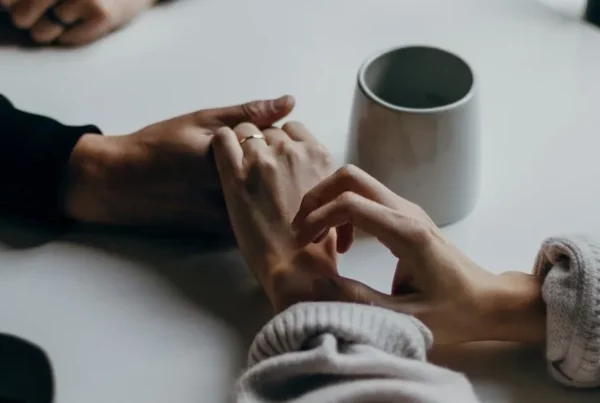
Comedian Tony Hinchcliffe made a dangerous quip at a recent Trump rally when he compared a popular NFL player to a notorious figure linked to domestic violence and murder. “I don’t know about you guys, but I think Travis Kelce might be the next O.J. Simpson,” he said. In one breath, he injected brutal images of femicide into the minds of the audience, all for a good laugh. The “joke” was far from innocent; this rhetoric contributes to the normalization of abuse against women. Let’s unpack why this is harmful and the impact that domestic violence (DV) humor has on our culture.
Research consistently shows that exposure to violence-related humor against women can desensitize people to the severity of such abuse (Ford et al., 2008).
Domestic violence humor is trivializing at its core. DV is a pervasive issue that affects millions of women every year, leading to emotional wounds, physical injury, and even death. According to the Centers for Disease Control and Prevention (CDC), about 1 in 4 women will experience severe physical violence from an intimate partner in their lifetime (Smith et al., 2018). These aren’t sporadic incidents—the statistics represent a ubiquitous, systemic reality of violence against women in American society.
The joke linking Travis Kelce to O.J. Simpson evoked images of grisly violence as fodder for entertainment. As a trauma psychologist, I think this dishonors survivors of intimate partner violence everywhere, including those who have died at the hands of abusive partners. Humor should never be a vehicle for minimizing the painful and often life-threatening experiences of others. Research consistently shows that exposure to violence-related humor against women can desensitize people to the severity of such abuse (Ford et al., 2008). It perpetuates messaging that domestic violence is not a serious issue. This can deter survivors from seeking help, as they may fear their trauma might be minimized or dismissed.
Moreover, because DV survivors often struggle with ongoing feelings of shame, fear, and isolation, the public trivialization of DV through humor only augments survivors’ sense of alienation. This downplaying engenders secondary victimization—a phenomenon where survivors are further victimized by others’ reactions to their trauma (Campbell & Raja, 1999).
The sinister effects of DV humor are even more pronounced for BIPOC (Black, Indigenous, and People of Color) women, who already face significant barriers in accessing support services. Black women experience higher rates of intimate partner violence compared to white women, yet systemic racism, socioeconomic disparities, and cultural stigma often limits their ability to access resources or report abuse (Crenshaw, 1991). Indigenous women also experience heightened rates of domestic violence, yet jurisdictional complexities and a lack of adequate community resources exacerbate their vulnerability (Deer, 2015). DV humor further contributes to a culture that is already dismissive of the unique struggles faced by BIPOC women, reducing the visibility of their suffering.
A study by Romero-Sánchez et al. (2016) found that sexist humor can increase men’s tolerance of violence against women, particularly among those who already hold sexist views.
The power of humor lies in its capacity to influence implicit attitudes and beliefs. Humor can either reinforce or challenge cultural narratives. DV jokes often operate on shock value, relying on stereotypes of abusive men and victimized women to elicit laughter. The repetition of these stereotypes—even under the guise of humor—reinforces gendered attitudes that normalize abusive dynamics.
A study by Romero-Sánchez et al. (2016) found that sexist humor can increase men’s tolerance of violence against women, particularly among those who already hold sexist views. For individuals predisposed to misogynistic beliefs, a joke like Hinchcliffe’s can be taken as a form of implicit validation—a wink and nod from the culture that their views aren’t just permissible, but funny.
The belittling of violence against women through humor perpetuates a vicious cycle: it makes abuse appear less harmful, emboldens abusers, and discourages victims from coming forward. This is an especially dangerous dynamic given the backdrop of underreported domestic abuse cases and the significant barriers that survivors already face in accessing support.
The belittling of violence against women through humor perpetrates a vicious cycle.
Media representations of domestic violence also play a role in shaping public perception. When violence is treated lightly, it undercuts the seriousness of the issue in the eyes of the public. A report by the American Psychological Association (2007) highlights how repeated exposure to sexualized and violent content can negatively influence young people’s perceptions of relationships and normalize abusive behavior.
For adolescents and young adults, who often reference media for cues on social behavior, the portrayal of domestic violence can contribute to what’s known as a “tolerance of abuse,” where individuals begin to see these behaviors as “not that bad” or even romanticized as signs of intense passion (Ryan & Kanjorski, 1998). Young audiences are unconsciously learning that the boundary between safety and violence is ambiguous—and that’s dangerous.
Domestic violence is too prevalent and too damaging to be reduced to a punchline.
DV is a serious, pervasive issue that claims lives and leaves indelible marks on survivors. While comedians often push boundaries, those boundaries should be pushed to challenge social norms that enable violence, not to reinforce them. Humor has the power to be transformative—to question the status quo, to bring uncomfortable truths to light, and to create space for change.
As therapists, we must acknowledge the impact these cultural messages have on our clients. Survivors of domestic violence need to feel validated and supported, and part of that support comes from challenging the cultural narratives that silence them. It involves taking a firm stance against harmful humor, speaking out when these jokes are told, and educating those around us about their true impact.
And for anyone wanting to be an ally, consider how powerful your voice is. When jokes like Hinchcliffe’s come up, challenge them. Use it as an opportunity to speak about the real consequences of domestic violence. Point out why it isn’t funny, because the normalization of abuse is never “just a joke.” It is a statement about what we, as a culture, are willing to tolerate. Domestic violence is too prevalent and too damaging to be reduced to a punchline.
References
American Psychological Association, Task Force on the Sexualization of Girls. (2007). Report of the APA Task Force on the Sexualization of Girls. Washington, DC: American Psychological Association.
Campbell, R., & Raja, S. (1999). Secondary victimization of rape victims: Insights from mental health professionals who treat survivors of violence. Violence and Victims, 14(3), 261-275.
Crenshaw, K. (1991). Mapping the margins: Intersectionality, identity politics, and violence against women of color. Stanford Law Review, 43(6), 1241-1299.
Deer, S. (2015). The Beginning and End of Rape: Confronting Sexual Violence in Native America. University of Minnesota Press.
Ford, T. E., Boxer, C. F., Armstrong, J., & Edel, J. L. (2008). More than “just a joke”: The prejudice-releasing function of sexist humor. Personality and Social Psychology Bulletin, 34(2), 159-170.
Romero-Sánchez, M., Durán, M., Carretero-Dios, H., Megías, J. L., & Moya, M. (2016). Exposure to sexist humor and rape proclivity: The moderator effect of sexism. Violence Against Women, 22(11), 1380-1396.
Ryan, K. M., & Kanjorski, J. (1998). The enjoyment of sexist humor, rape attitudes, and relationship aggression in college students. Sex Roles, 38(9-10), 743-756.
Smith, S. G., Zhang, X., Basile, K. C., Merrick, M. T., Wang, J., Kresnow, M., & Chen, J. (2018). The National Intimate Partner and Sexual Violence Survey (NISVS): 2015 Data Brief – Updated Release. Atlanta, GA: National Center for Injury Prevention and Control, Centers for Disease Control and Prevention.
Vidales, G. T. (2010). Arrested justice: The multifaceted plight of immigrant Latinas who face domestic violence. Journal of Family Violence, 25(6), 533-544.






